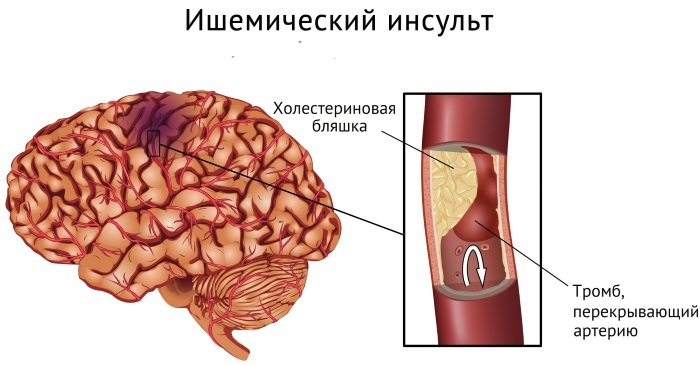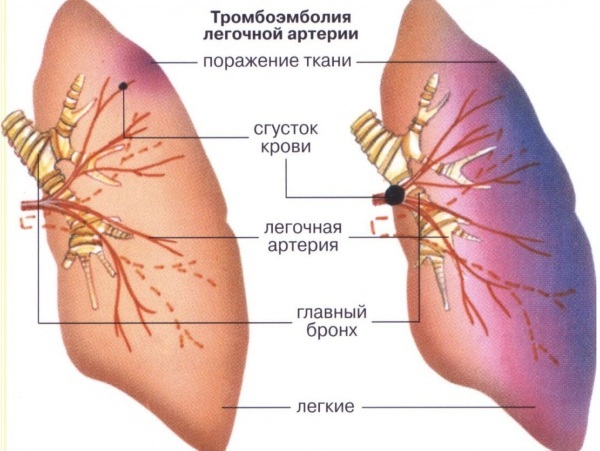Thromboembolism involves a whole range of symptoms and signs that appear in a person as a result clogged arteries with blood clots. The pathological condition occurs suddenly, doctors have little time to help the patient and save his life. Serious complications include heart attack, stroke, or gangrene.
Record content:
- 1 Views
- 2 Stages and degrees
- 3 Symptoms
- 4 Reasons for the appearance
- 5 Diagnostics
- 6 When to see a doctor
- 7 Prophylaxis
-
8 Treatment methods
- 8.1 Medications
- 8.2 Traditional methods
- 8.3 Other methods
- 9 Possible complications
- 10 Thromboembolism video
Views
Given the area affected by pathological processes, doctors distinguish the following types of thromboembolism:
| Name | Description |
| Thromboembolism of cerebral vessels | A pathological condition that is more often diagnosed in elderly people. It is a consequence of a prolonged increase in blood pressure or atherosclerosis. |
| Pulmonary artery | Blood clots enter the lungs from the heart muscle, superior or inferior vein. At risk are pregnant women, the elderly or newborns. |
| Abdominal aorta | Pathology often develops against the background of rheumatism. The left venous opening is narrowed. The formed thrombus is located on the branching of the aorta, which provokes thromboembolism of the femoral region. In the absence of timely medical care, gangrene of the lower extremity and shock develops. |
| Thromboembolism of the lower extremities | The thrombus settles in the lumen of the peripheral arteries. The symptomatology of the disease in this case depends on the degree of blood flow disturbance. |
| Amniotic fluid embolism | A serious and dangerous complication that develops during pregnancy. It occurs as a result of the ingress of amniotic fluid into the circulatory system. A chronic type of thromboembolism, in which the fetus does not receive all the substances it needs in full. The life of the child's mother is also at risk. |
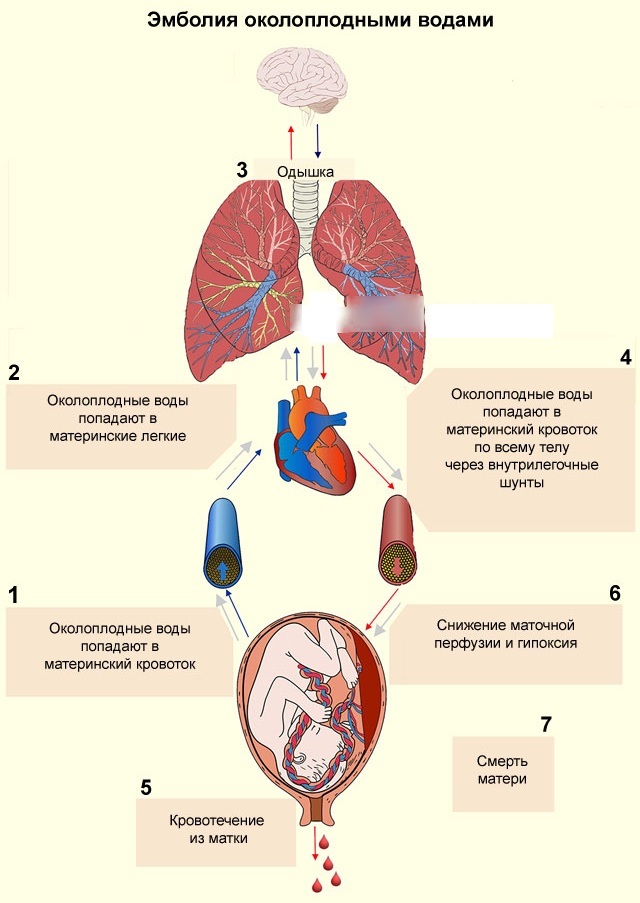
In each case, characteristic symptoms appear, with which it is important to go to the hospital in a timely manner and undergo an examination. Correctly selected therapy gives a positive prognosis for the future and increases the chances of recovery. Otherwise, a person will face serious complications, including death.
Stages and degrees
Depending on the volume of circulatory disorders, there are 4 degrees of blockage of blood vessels:
| Name | Description |
| I degree (non-massive) | The total throughput of the blood vessel is impaired by less than 25%. Small vessels are clogged. |
| II degree (submassive) | There is a blockage of 30-50% of the blood flow. Pathological changes affect the lobar arteries and segmental vessels. The patient has signs of insufficient functioning of the right ventricle. |
| III degree (massive) | The blood flow is disturbed by 50% or more. The main artery and pulmonary trunk are blocked. The accompanying symptoms are shock and recurrent low blood pressure. |
| IV degree | The blood flow is blocked by 75%, which provokes death. |
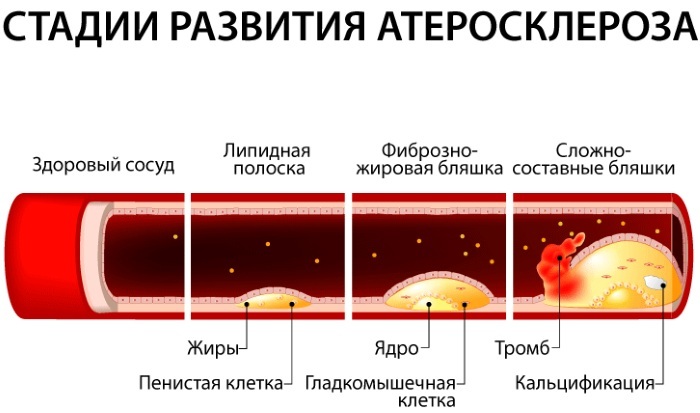
Given the provoking factors and causes of the pathological condition, the following types of thromboembolism are distinguished:
| Name | Description |
| Sharp | The disease occurs against the background of a sudden blockage of the main arteries of the circulatory system. Pathological processes develop within a few hours, minutes and in most cases provoke the death of a person. |
| Subacute | The middle vessels are clogged. Pathological processes develop over several days, months. The patient is periodically disturbed by seizures and symptoms appear, depending on the lesion of a particular area. |
| Chronic | There are repeated relapses of thromboembolism against the background of circulatory failure in small capillaries. |
Thromboembolism (it is important to notice the symptoms and signs of the disease in the early stages of development in order to start preventive treatment in a timely manner) as it develops, it provides 4 main stages:
| Name | Description |
| Stage 1 | The person has no complaints. In some situations, after an increased load, the lower extremities begin to hurt, there is severity and pain. Rest well enough to recover. |
| Stage 2 | Motor activity remains. The legs become swollen, cold, severe painful sensations arise. In some areas of the skin, sensitivity disappears, a pale shade appears. |
| Stage 3 | Tissue ischemia develops. Provided medical assistance during the first 3 hours. will allow to reverse pathological changes. The patient complains of strong painful sensations, there is no pulse and sensitivity. As thromboembolism develops, joint mobility is impaired. |
| Stage 4 | At this stage, most of the processes are irreversible. Gangrene develops, dark spots form on the skin. |
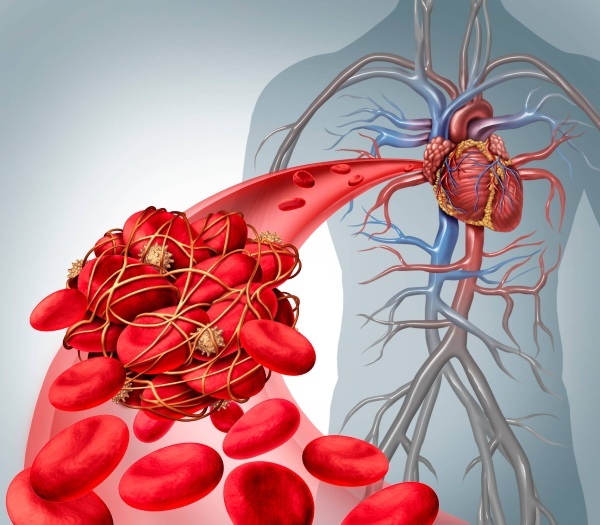
When the first signs of the disease appear, it is important to immediately contact a therapist. If you postpone the trip to the hospital, the disease will progress, against the background of which serious complications will arise. The person runs the risk of being disabled or dying.
Symptoms
The clinical picture of the disease depends on the location of the pathological processes:
| Damage area | Symptoms |
| Abdominal arteries |
|
| Arteries of the brain |
|
| Lower limb arteries |
|
| Pulmonary arteries |
|
| Renal arteries |
|
| Amniotic fluid |
|
Thromboembolism will help the physician to determine, taking into account the symptoms of the disease. The specialist will prescribe the patient the most informative examination, based on the signs that have appeared. There is no time to waste, it is important to start treatment on time.
Reasons for the appearance
There are numerous factors that trigger the development of thromboembolism:
- high blood density;
- an increase in platelet levels;
- cardiovascular diseases;
- phlebeurysm;
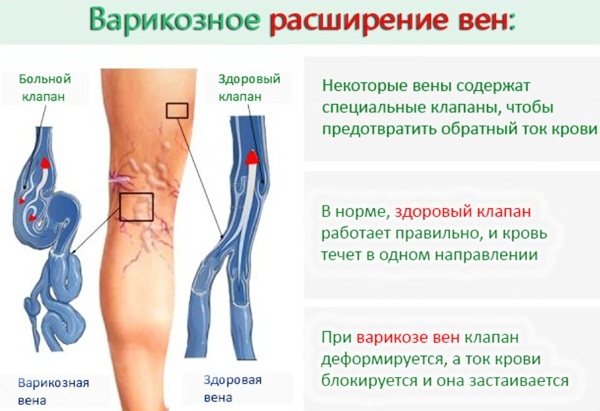
- partial or complete paralysis of the legs;
- high blood sugar;
- past heart attack.
There are also predisposing causes that contribute to the occurrence of violations:
| Name | Description |
| Age | The older a person is, the more likely they are to experience thromboembolism. |
| Gender | The risk of blood clots is present to a greater extent in females. This fact is explained by the hormonal characteristics of the body. |
| Physical activity | If you move a little and lead a predominantly sedentary lifestyle, blood stagnation in the veins occurs. |
| Varicose veins | Dilated venous vessels in the lower extremities contribute to the formation of blood clots. |
| Hormonal drugs | This applies to contraceptives. Medicines contain substances that affect the rheological properties of the blood. |
| Heredity | If the family has relatives with various pathologies or disorders, which provokes the formation of blood clots, it is necessary to see a doctor. |
Smoking, frequent infections, cancer, increased stress on the lower extremities, chemical poisoning also trigger the mechanism of blood clots. The same applies to surgical interventions on the heart or blood vessels, obesity and uncontrolled drug intake.
Diagnostics
A physician therapist will help to establish an accurate diagnosis and identify violations at an early stage. It is necessary to visit a specialist for any disorders associated with blood circulation in order to undergo a diagnosis and determine the cause of pathological changes in the body.
To detect thromboembolism, patients are prescribed the following examination methods:
| Name | Description |
| Blood analysis | The results will help identify indirect signs of the disease. |
| Ultrasound examination (ultrasound) | The heart is examined to detect structural changes in its tissues. Ultrasound also allows you to scan the blood vessels and determine the location of the blood clot. |
| Coagulogram | The analysis allows you to assess blood coagulation. |
| Phlebography | Diagnostic methods to determine the area of vascular lesions and assess the intensity of blood flow in this area. |
| Angiography | |
| X-ray | The purpose of the examination is to exclude damage to bone tissue, the presence of neoplasms or inflammatory foci. |
| Perfusion lung scintigraphy | The study helps to identify the area where blood flow is impaired. |
| Computed tomography (CT) | A diagnostic method that allows you to accurately determine the location of the thrombus. |
Diagnosis of thromboembolism will allow differentiating the disease, since many of the symptoms are similar to the manifestations of other pathologies (heart failure, heart attack).
When to see a doctor
Thromboembolism (symptoms and signs depend on the site of the lesion, where the arteries are blocked) is a dangerous disease in which you cannot hesitate. A person's life depends on the speed of the assistance provided.
You can contact a therapist earlier if the first violations appear. The doctor will prescribe a full examination and, based on the results obtained, select a preventive treatment.
Prophylaxis
It is difficult to prevent the disease, since the main provoking factors are external causes.
But, if you remember the useful rules and recommendations of the doctor, you can reduce their negative impact on the human body and the risk of thromboembolism:
- Maintain regular physical activity.
- Eat correctly and rationally.
- Timely treat diseases of the cardiovascular system.
- Monitor blood pressure readings.
- Avoid stressful situations.
- Observe the rest regime.
- Eliminate any bad habits (alcoholic beverages, tobacco products, drugs, overeating).
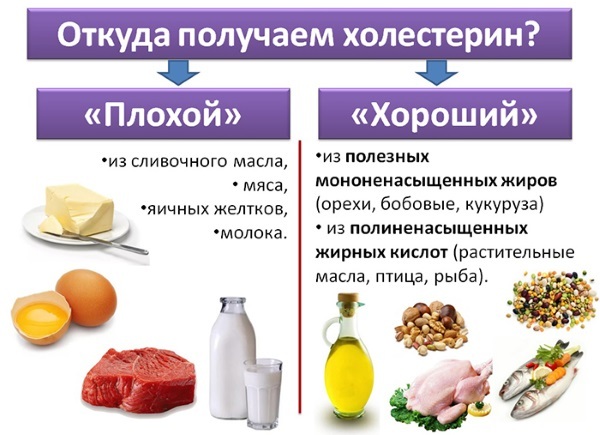
- Visit a therapist and cardiologist regularly.
- Observe the drinking regime.
- Wear loose fitting clothing made from natural materials.
If there have already been situations of blood clots in the past, it is recommended to periodically see a doctor for preventive purposes. If necessary, take special blood thinners.
Treatment methods
The main goal of therapy is to dissolve the formed thrombus and restore blood clotting. All types of the disease are dangerous to human life, therefore, treatment is carried out in stationary conditions under the supervision of a doctor. Strict bed rest is shown.
Medications
Medicines are selected by the doctor, taking into account the patient's condition and the degree of damage to his body.
The following drugs are used:
| Drug group | Name | Application |
| Anticoagulants | Heparin, Warfarin | Medicines thin the blood. The adult dosage is initially 10 mg once a day. Further, the amount of the drug is gradually reduced to 5-7.5 mg. The course of therapy lasts 3-6 months. |
| Thrombolytics | Streptokinase, Urokinase | The drugs dissolve the blood clot. The drug is administered intravenously at 1.5 million. IU for 2 hours |
| Antispasmodics | No-Shpa, Drotaverin | Medicines restore vascular tone and remove tension, dilate arteries. The drug is recommended to be taken orally at 120-240 mg, the dosage is divided into 2-3 doses. |
| Anti-inflammatory drugs | Nimesulid, Nise | Adults are prescribed 100 mg 2 times a day after meals. The course of therapy is no more than 15 days. |
| Medicines to dilate small blood vessels | Pentoxifylline, Trental | The recommended dosage is 2 tablets 3 times a day. After reaching the therapeutic effect, adults are prescribed 1 tablet 3 times a day for 1-3 months. |
| Preparations for strengthening the walls of blood vessels | Detralex, Troxevasin | Medicines increase the elasticity of the vascular walls. The drug is taken in the afternoon and evening, 1 tablet with meals. |
All types of thromboembolism must be treated in an inpatient setting. The disease is dangerous to human life; self-therapy at home is out of the question.
Traditional methods
Thromboembolism is primarily treated with medication or surgery. Folk remedies are used in complex prophylaxis or after surgery, also together with traditional medicines.
Healers and healers recipes:
| Name | Recipe | Application |
| Horse chestnut tincture | Pour 100 g of fruit with vodka (1 l). Soak for 3 weeks in a dark place. | Take the finished medicine in 30-40 drops, pre-diluting in 0.5 tbsp. water, 3 times a day before meals. |
| Walnut leaves | Pour 2 tbsp. leaves with hot water (1 tbsp.). Insist 1 tsp. and strain. | The finished product is recommended to take 1 tbsp. 5 times a day. |
| Healing infusion | Mix raspberry, cherry and black currant leaves in equal portions. Pour 2 tbsp. mixture with hot water (2 tbsp.). Withstand 40 minutes. and strain. | It is recommended to prepare the product fresh every time. Consume 1 tbsp., For taste, you can add a little honey. |
It is strictly forbidden to make a decision on your own, so as not to aggravate the state of health. Otherwise, the risk of death increases.
Other methods
Thromboembolism (symptoms and signs will help the doctor determine the extent of the damage to the human body) involves adherence to a strict diet, which helps to normalize body weight, strengthen the walls venous vessels. Eating well will also help restore stool and reduce blood viscosity.
| Allowed Products | Prohibited foods |
|
|
The patient should also observe the drinking regime, every day consume at least 2-2.5 liters of liquid (natural juices, green and herbal, weak tea, mineral water, rosehip decoction, fruit drink).
In the absence of positive dynamics after traditional drug treatment or in emergency situations, the patient is shown surgery.
The main indications for surgical treatment are as follows:
- massive thromboembolism;
- chronic or recurrent blockage of the pulmonary arteries;
- a sharp decrease in blood pressure;
- thromboembolism of the pulmonary arteries and large adjacent branches of the circulatory system;
- a sharp violation of blood flow in the lungs.
The surgeon chooses the method of surgical intervention, taking into account the patient's condition and the degree of arterial damage, as well as the localization of pathological processes.
In medicine, the following methods of surgical treatment are used:
| Name | Description |
| Installing a cava filter | At the site of the lesion, a special mesh is installed into the clogged vessel, which does not allow the formed blood clots to pass through. The kava filter protects the arteries and the heart and is installed in the lumen of the inferior vena cava.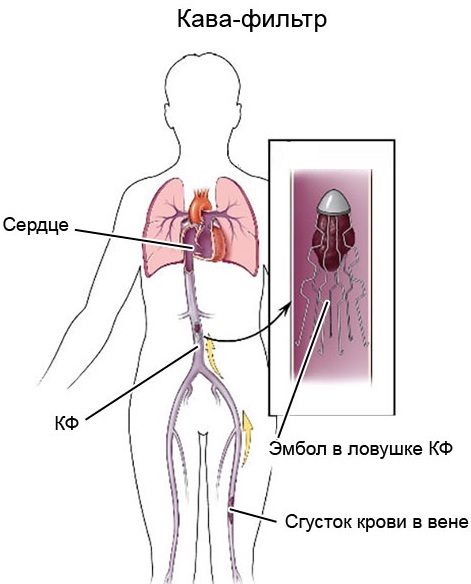
|
| Embolectomy | The operation involves removing a blood clot through a small incision in the vessel wall. Surgical intervention is indicated for patients in the first 6-12 hours. after an attack. |
| Thrombendarterectomy | In the course of medical procedures, the inner wall of the vessel is removed along with the plaque formed on it. |
After surgery, the patient is additionally prescribed medications to prevent recurrence of thromboembolism. Anticoagulants are taken for a long time, they are necessary to thin the blood and prevent the formation of blood clots.
Possible complications
Thromboembolism (symptoms and signs of the disease depend on the degree of development of pathological processes) entails dangerous consequences in the absence of timely medical care:
| Name | Description |
| Peritonitis | Complication of thromboembolism of the abdominal arteries. Pathological processes provoke intestinal tissue necrosis and death in a short time. |
| Gangrene | Complication associated with blockage of the arteries of the lower extremities in the absence of surgical treatment. There is a high probability of patient death, especially if the femoral artery is affected. |
| Respiratory failure | Fatal complication of blockage of the pulmonary artery. |
| Heart attack | Complication from pneumonia. First, a small part of the organ dies off. Then, progressive pathological processes provoke a more serious inflammatory process.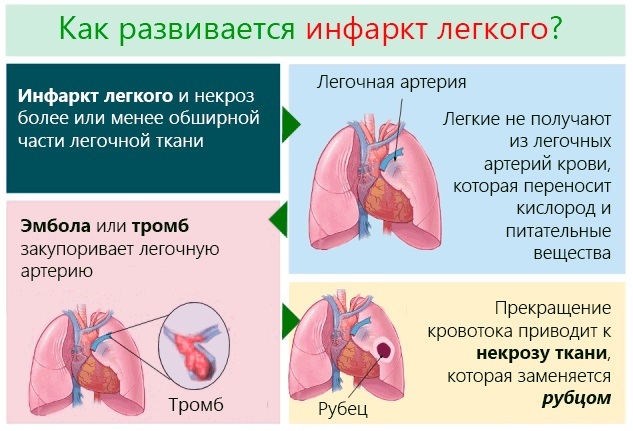
|
Inflammatory reaction and abscess of the lungs, stroke, ischemia of the intestines, kidneys, as well as pneumonia of an infarction nature are a complication of thromboembolism. A large area of arterial disease leads to the death of the patient.
Vascular diseases are dangerous for human health, since blood supports the work of all internal organs and systems. Thromboembolism is characterized by various symptoms, taking into account the area of blockage in the arteries. The first signs cannot be ignored, since the pathological condition entails serious consequences, including death.
Article design: Vladimir the Great
Thromboembolism video
Malysheva on pulmonary embolism:

